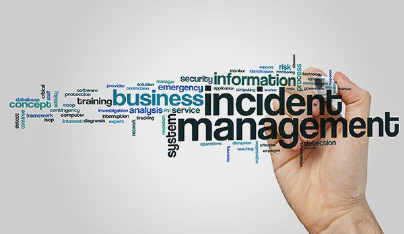Managing Critical Incidents: Strategies for Success

Discover effective strategies for managing critical incidents and ensuring successful outcomes.
Understanding Critical Incidents
Critical incidents refer to unexpected events or situations that have the potential to cause significant harm, loss, or disruption. These incidents can range from natural disasters and accidents to acts of terrorism or cybersecurity breaches. Understanding the nature and impact of critical incidents is crucial for effective management and mitigation.
By analyzing past incidents and studying their causes, organizations can gain insights into the common triggers and patterns associated with critical incidents. This knowledge can help in developing proactive strategies and preventive measures to minimize the impact of future incidents.
Additionally, understanding the different types of critical incidents and their potential consequences allows organizations to prioritize their response efforts and allocate resources accordingly. This ensures a more efficient and effective overall incident management approach.
Developing a Comprehensive Incident Management Plan
A comprehensive incident management plan is essential for effectively responding to critical incidents. This plan outlines the steps and procedures that need to be followed during an incident, ensuring a coordinated and organized response.
When developing an incident management plan, it is important to involve key stakeholders from various departments and disciplines. This ensures that all perspectives are considered, and the plan is comprehensive and well-rounded.
The plan should include clear roles and responsibilities for each team member involved in incident management, as well as a detailed communication strategy. It should also outline the process for assessing and prioritizing incidents, as well as the criteria for escalating incidents to higher levels of management or external authorities.
Regular review and updates of the incident management plan are crucial to ensure its effectiveness. As the organization evolves and new threats emerge, the plan should be adapted to address these changes and improve overall incident response capabilities.
Implementing Effective Communication Channels
Effective communication is a key component of successful critical incident management. During an incident, timely and accurate communication is essential to ensure all stakeholders are informed and can take appropriate actions.
Organizations should establish multiple communication channels to disseminate information during an incident. This may include email alerts, text messages, phone calls, and dedicated incident management platforms. The chosen channels should be reliable, easily accessible, and capable of reaching all relevant parties.
In addition to outbound communication, organizations should also establish channels for receiving information and feedback from stakeholders. This can include hotlines, online portals, and regular updates through various communication channels. By enabling two-way communication, organizations can gather valuable insights and ensure a more collaborative and efficient response to critical incidents.
Training and Preparedness for Critical Incidents
Proper training and preparedness are fundamental to effectively manage critical incidents. All personnel involved in incident response should receive regular training to ensure they understand their roles, responsibilities, and the incident management plan.
Training should cover various aspects, including incident identification and reporting, emergency response procedures, resource allocation, and communication protocols. It should also include simulations and drills to test the effectiveness of the incident management plan and identify areas for improvement.
In addition to training, organizations should invest in preparedness measures such as creating emergency kits, establishing communication protocols, and conducting risk assessments. Regular exercises and rehearsals can help identify gaps in preparedness and ensure a swift and coordinated response when a critical incident occurs.
Continuous Evaluation and Improvement
Continuous evaluation and improvement are crucial for enhancing critical incident management capabilities. After each incident, organizations should conduct a thorough review to identify strengths, weaknesses, and areas for improvement.
This evaluation should involve all stakeholders and consider various aspects, including the effectiveness of the incident management plan, the efficiency of communication channels, the coordination among response teams, and the overall response time.
Based on the findings of the evaluation, organizations should implement necessary changes and updates to enhance their incident management capabilities. This may include revising the incident management plan, improving communication infrastructure, providing additional training, or investing in new technologies.
By continuously evaluating and improving their incident management processes, organizations can better prepare for future incidents and ensure successful outcomes.
To learn more about critical incident management visit 911cellular.com



